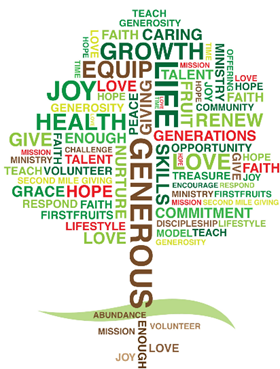STEWARDSHIP
AND DISCIPLESHIP TOGETHER
Customizing Teaching Styles Based on Life Stages
Last week my discussion was focused
on the keys to effective discipleship[1]
where I discussed creating a safe space for relationships to form and having organic
conversation. This week, let’s talk about customizing teaching styles for difference
individuals. I’ll start with talking about individuals’ life stages.
Too often, and I am as guilty of this
as anyone, there’s a “one size fits all” lesson. We’re explaining what we need
to explain, asking what we need to ask, and we assume everyone is going to
understand it in the same way. But, of course, first, we all learn differently,
and more importantly, each of us has learned differently over time. When we
were very young, we probably learned differently then we are learning right
now. We grow and change; our lives grow and change; how we learn grows and
changes; and how we respond grows and changes.
So customizing our stewardship and discipleship
approach to life stages probably makes a lot of sense. Life stages can be basically
broken down as:
1.
Child
– this teaching needs to be age appropriate. Children learn well with someone
modeling for them and participating with them, often parents.
2.
Teen
– this is the time when teens are learning concepts of adulting and consciously
applying biblical principles (those things they saw modeled while they were
growing up).
3.
Young
Adult – there are two sub-categories to this one. Young adults cannot all be
lumped together.
a.
Gen
Z (to age 25) – reach them where they’re at
b.
Millennial
(age 26-44) – they want to make an impact on the world. Help them figure out how
to do that.
4.
Adult
– there are sub-categories to this one as well
a.
Gen
X (age 44-59) – these are the people who like in-person communication
b.
Boomer
(age 60-78) – more formal interactions work here. This is a broad range of age,
so this sub-category also expands into the senior category. I am at the lower
end of the boomer, and I approach things differently than those persons 18
years older than me.
5.
Senior
– the Silent generation are those age 79-99. They value relationships.
So if you read through these
breakdowns, you’ll see that the formal letter you send out at stewardship time
may only work for one small segment. You’ll need more than a letter! Relying on
what’s happened and worked in the past is only going to work for another small
segment. Moving toward the future is important! Talking about the need for money
only may not communicate well to the group that wants to make an impact on the
world. Stories matter!
For stewardship, you’ll want to
figure out your message (which is different from “we need money to pay our
bills”), and the multiple ways you plan to communicate it.
For discipleship, you’ll want to
figure out how disciples are discipled and how they grow, and determine the
multiple ways you plan to communicate and learn and disciple.
Next
week we’ll continue this conversation about customization.
If you wish more information on this,
or would like to discuss stewardship and its relationship with discipleship,
please feel free to contact me at (315) 427-3668 or sranousacctg@twcny.rr.com. I’d be happy to help.
[1] Stewardship
Education that Builds Disciples, Furlong, Jessica and Dick, Don (Christian
Stewardship Network), https://www.christianstewardshipnetwork.com.


No comments:
Post a Comment